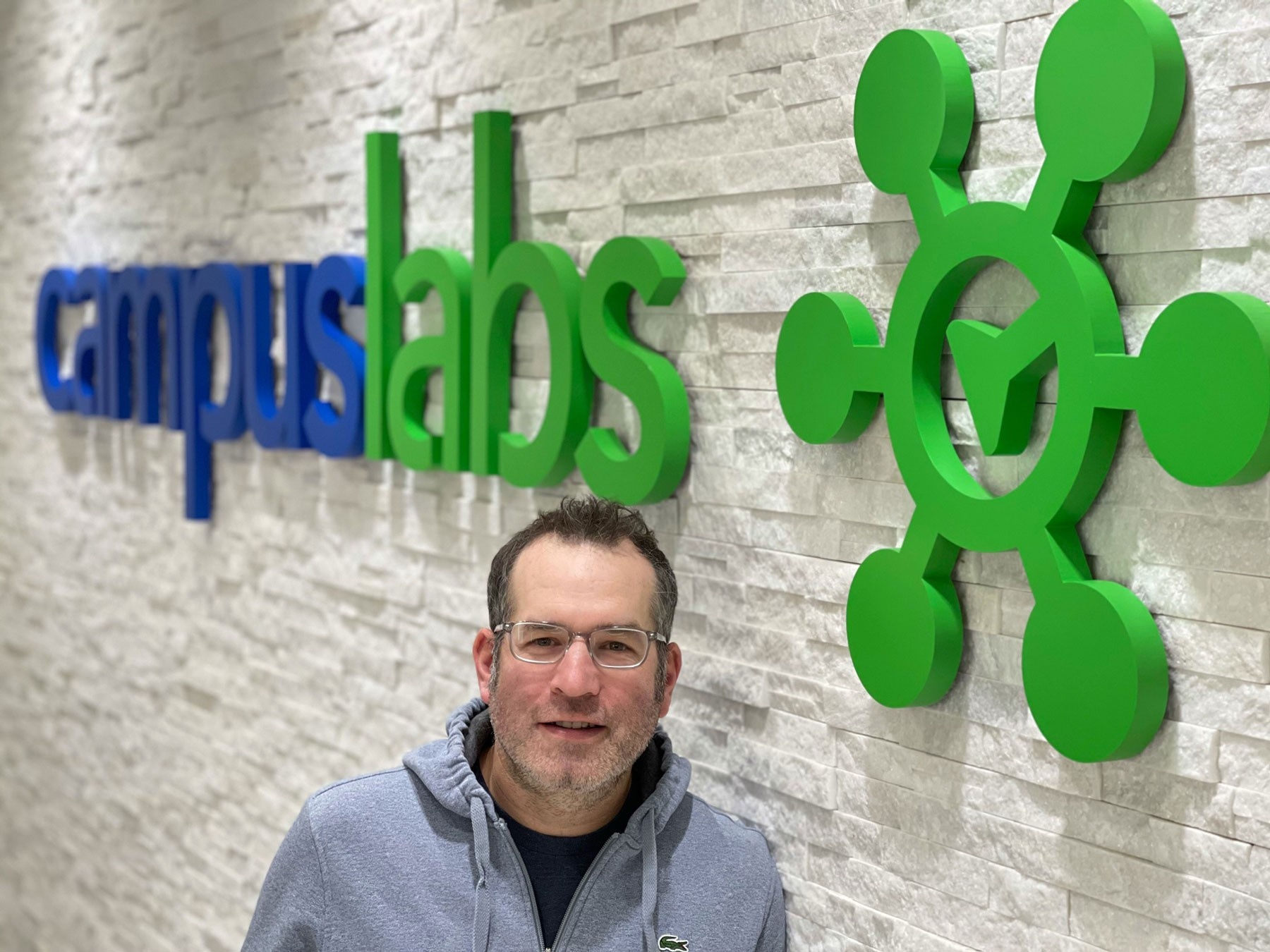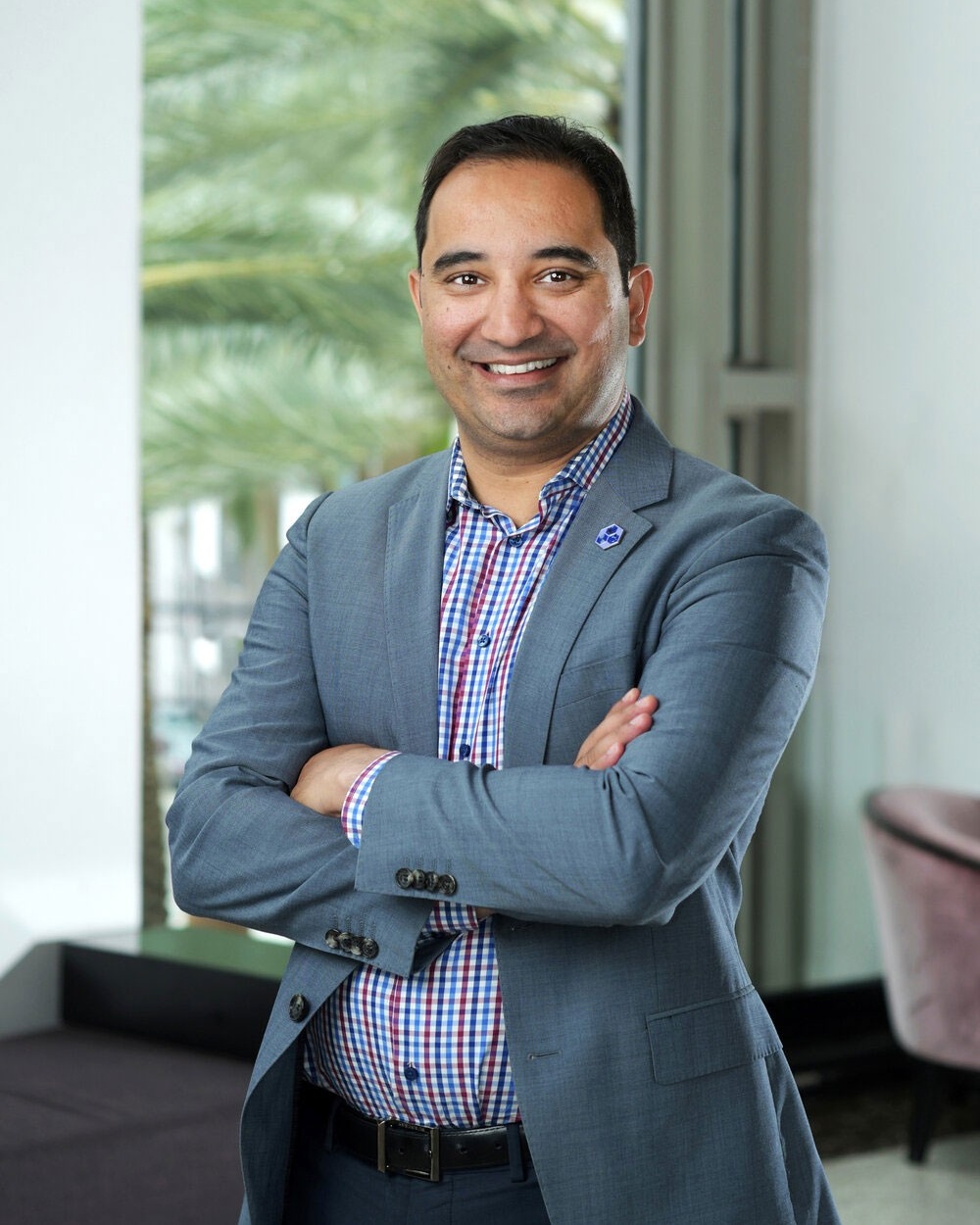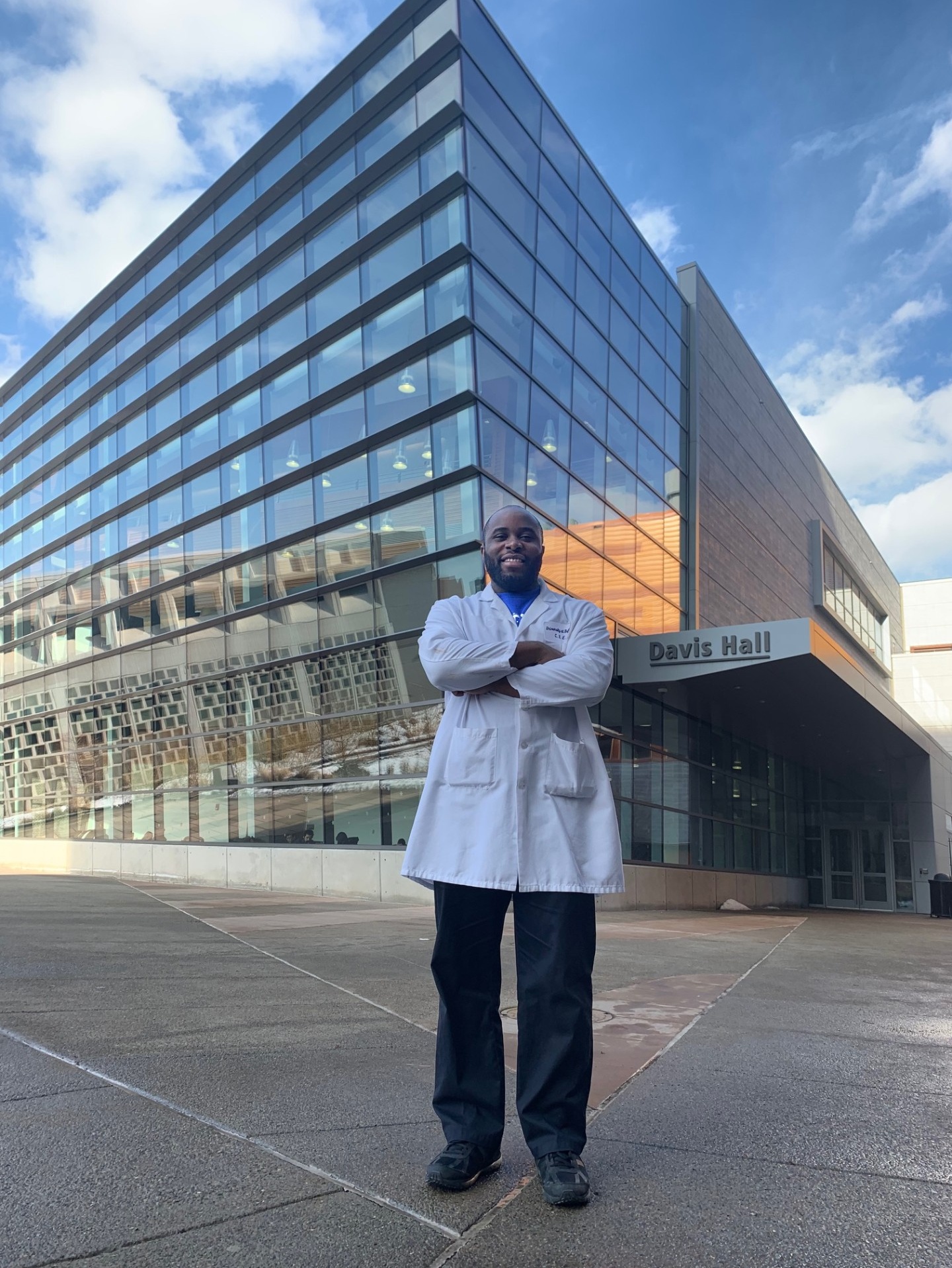Two decades of innovation
Panasci competition builds a legacy of WNY entrepreneurship
By Kevin Manne
For 20 years, the Henry A. Panasci Jr. Technology Entrepreneurship Competition has brought together UB students from science, technology, business and other disciplines to maximize their potential and create viable businesses in Western New York.
Hosted by the School of Management’s Center for Entrepreneurial Leadership and UB’s Blackstone LaunchPad & Techstars, the program was created by the School of Management and the UB Office of Business and Entrepreneur Partnerships and is funded by a $1 million endowment from the late Panasci.
Winning founders have sought to innovate in a wide range of fields, and as the competition reaches a milestone year, some of them reflect on their entrepreneurial journeys and share how their ideas—and businesses—have evolved.
For a full list of past winners and to learn more about the Panasci competition, visit mgt.buffalo.edu/panasci.
Reich. Photo: Mia Quinn
2001 Winner: Student Voice
Team: Eric Reich, JD/MBA ’02, and Michael Weisman, MBA ’01
How it started: In 2000, Reich and Weisman came up with the idea for a business focused on collecting student feedback to improve campus services. The idea was validated in 2001 when Reich became the student representative on the UB Council.
Where it went: Student Voice grew to more than $10 million in annual sales with more than 650 clients when it was rebranded Campus Labs and acquired shortly after for more than $40 million. Following another round of funding, the company was acquired for $91 million in 2015. In 2020, it merged with two other companies to form Anthology, now among the largest tech companies in education.
What we learned: “Developing a pitch and being ready for judges’ questions forced us to distill our vision, which was helpful discipline to keep us focused,” says Reich. “Then, the responsibility of being the first winner and knowing we had to be successful for the credibility of the competition was extra motivation. It was an awesome experience that set the stage for creating a cool company and lots of jobs in Buffalo, which we need more of.”
Chakravarthy.
2008 Winner: NanoAxis
Team: Krishnan Chakravarthy, MD/PhD ’12; Darren Leskiw, BS Engineering ’05, PMBA ’09; Indrajit Roy; and Tom Sass, BS Engineering ’96, PMBA ’04
How it started: Conceived in UB’s technology incubator, NanoAxis set out to change medicine at the genetic level using nanomaterials known as quantum dots—infinitesimally small semiconductor materials that absorb light and re-emit it at a different wavelength to create a spectrum of colors. When linked to a therapeutic drug, these dots would ensure a safe and precise delivery of the drug to a targeted site.
Where it went: NanoAxis grew its patent portfolio, struck multiple partnerships and expanded the reach of its technology overseas. And while the company was only partially successful, missing some technical milestones, Chakravarthy went on to found multiple startups that have raised more than $1 million and are ramping up to commercial deployment. He now serves as an assistant professor at UC San Diego Health and is an interventional pain and spine surgeon.
What I learned: “My Panasci experience taught me incredible lessons on how to grow a startup from inception or idea, form the right team, raise funding and see things succeed through pure determination,” says Chakravarthy. “The training put me in a unique position globally in the interventional pain field. I am so excited about what the future will bring—we are on the brink of major medical breakthroughs.”
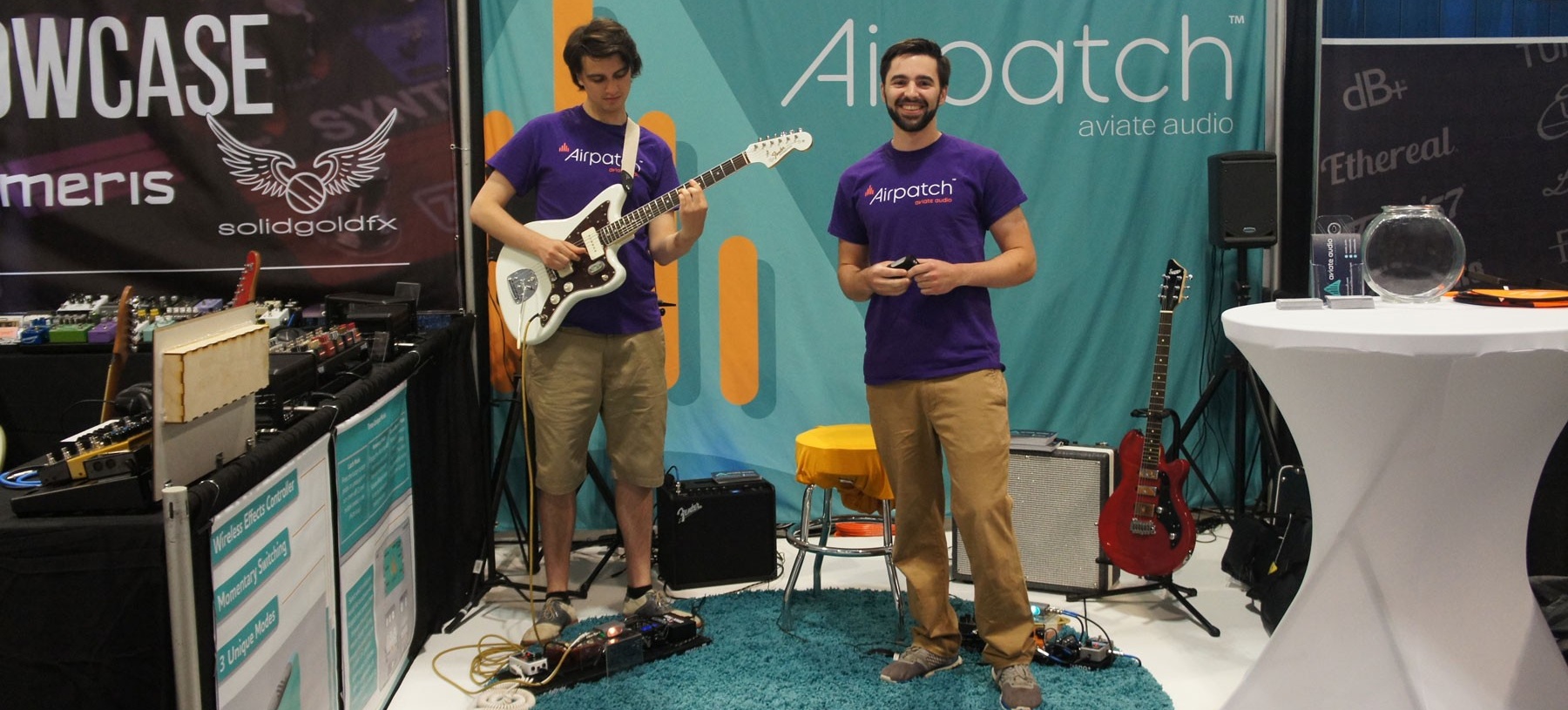
From left, Nolan and Jaquin at the 2019 National Association of Music Merchants trade show.
2018 Winner: Aviate Audio
Team: Ryan Jaquin, BS Engineering/MBA ’18; Shane Nolan, BS Engineering/MBA ’18; and Alex Schwartz, BS Engineering ’17
How it started: Nolan wanted guitarists to be able to control all their sound effects right from their instruments, so he partnered with Jaquin and Schwartz to build a prototype of an ultra-compact digital pick guard.
Where it went: After founding Aviate Audio, the team launched its first product—Airpatch, a wireless switch that adds effects to an instrument—on Indiegogo in 2019, with a major debut at the National Association of Music Merchants trade show in Nashville, Tennessee. Now, they are working toward an expanded product line.
What we learned: “Entrepreneurial thinking taught us to follow our passions in music and technology while embodying the persistence and adaptability we needed to succeed,” says Nolan. “We gained the confidence to fully commit to our venture and the support that has taken us from an idea to launching a product and securing follow-on funding.”
Ogoke.
2019 Winner: Livandala
Ogechi Ogoke, PhD ’21
How it started: Ogoke turned his PhD research focus—developing functional liver tissue from stem cells—into a startup to commercialize an alternative to liver transplants.
Where it went: Shortly after the competition, Livandala rebranded to Ovana Life Sciences and strengthened its business and technology plan for the near future. The company pivoted toward the development of a microcapsule to help restore, regenerate or mitigate organ failure.
What I learned: “I now understand what the road to entrepreneurship entails, including how to pivot through your ideas and strengthen your presentation to potential investors through the startup phase,” says Ogoke.
2020 Winner: Immunaeon
From left, Michael John, Immunaeon's chief information officer, with Cooper, Utley and Fisher. Photo: Nancy J. Parisi
Team: James Cooper, MD/PhD student; Joe DiNardo; Daniel Fisher, PhD ’11; Dan Rera, MA ’07, PMBA, ’11; Adam Utley, PhD ’19; and Tom White, MD
How it started: Immunaeon began as an idea for a medical device company, but through Panasci, grew to a multifaceted biotech startup using deep learning algorithms to establish new diagnostic criteria for disease and novel immunotherapeutic applications.
Where it went: The venture took first place in last year’s Panasci competition, which was postponed until September and held virtually for the first time due to COVID-19. Even with the delayed start, Immunaeon is off and running, hiring its first full-time employee and getting more experiential entrepreneurship training in the National Science Foundation’s I-Corps program.
What we learned: “By helping us shape the business model, unlock the vast network of resources at UB and connect to leaders in the thriving Buffalo startup community, our experience with Panasci continues to help Immunaeon grow and succeed,” says Utley.
Onward and upward
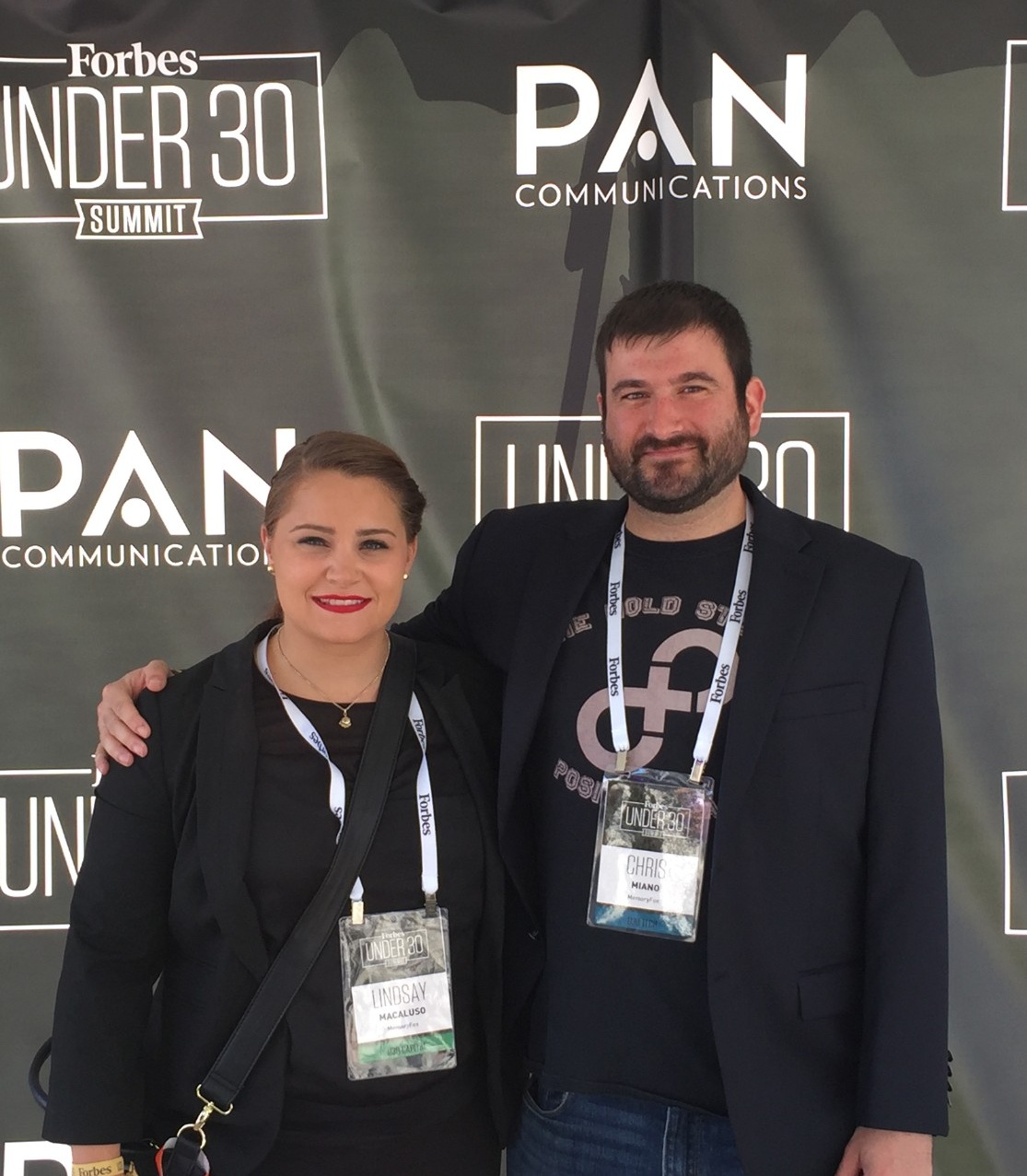
Lindsay Macaluso, MArch/MBA ’18—pictured with teammate Chris Miano, MBA ’17—was honored by Forbes at the Blackstone Launchpad Under 30 Showcase in 2016.
The Panasci Technology Entrepreneurship Competition has been a launching pad for its participants, who have gone on to raise additional funds and thrive at other competitions. Here’s just a sample:
Graphene Devices Ltd. – 2010 Winner
- New York State Energy Research and Development Authority, 2010 ($466,000)
- U.S. Navy Small Business Innovation Research program, 2010 ($80,000)
- U.S. Army Small Business Innovation Research program, 2010 ($70,000)
- UB Center for Advanced Biomedical and Bioengineering Technology, 2010 ($22,000)
diMien LLC – 2013 Winner
- Finalist, 43North startup competition, 2018
- More than $2 million in funding from federal, state and local agencies, and angel and venture capital funds
Pop Biotechnologies (formerly Photozyne) – 2015 Winner
- Contract for vaccine development, National Institutes of Health, 2019 ($600,000)
- First place, Rise of the Rest 4.0 Pitch Competition, 2015 ($100,000)
- Second place, New York Business Plan Competition, 2015 ($5,000)
Buffalo Automation Group – 2016 Winner
- Inaugural recipient, Buffalo Innovation Seed Fund, 2020 ($500,000)
- First place, Detect and Avoid Solutions, Association for Unmanned Vehicles Systems International XCELLENCE Awards, 2019
- Selected for Acceleration by PortXL, 2019
- Semifinalist, GENIUS NY Accelerator Competition, 2019
- First place, New York State Business Plan Competition, 2016 ($10,000)
MemoryFox – 2016 Semifinalist
- Recipient, Launch NY Seed Fund, 2019 ($50,000)
- Lindsay Macaluso, MArchitecture/MBA ’18, honored by Forbes at the Blackstone Launchpad Under 30 Showcase, 2016
NanoHydroChem – 2017 Winner
- Winner, FuzeHub Commercialization Competition, 2017 ($50,000)
Aviate Audio – 2018 Winner
- Winner, FuzeHub Commercialization Competition, 2020 ($50,000)
- First place, New York Business Plan Competition, 2018 ($20,000)
Willow – 2018 Finalist
- Recipient, Launch NY Limited Partner Fund, 2019
